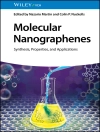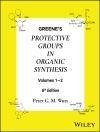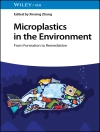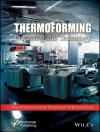Fundamentals of Polymer Science for Engineers
F illing a gap in the market, this textbook provides a concise, yet thorough introduction to polymer science for advanced engineering students and practitioners, focusing on the chemical, physical and materials science aspects that are most relevant for engineering applications.
After covering polymer synthesis and properties, the major section of the book is devoted to polymeric materials, such as thermoplastics and polymer composites, polymer processing such as injection molding and extrusion, and methods for large-scale polymer characterization. The text concludes with an overview of engineering plastics. The emphasis throughout is on application-relevant topics, and the author focuses on real-life, industry-relevant polymeric materials.
Jadual kandungan
Preface xv
Acknowledgments xvii
Part One Introduction 1
1 Introduction 3
1.1 Milestones in the Development of Polymer Science 3
1.2 Basic Terms and Definitions in Polymer Science 11
1.2.1 Polymer 11
1.2.2 Monomer 12
1.2.3 End Groups 13
1.2.4 Degree of Polymerization 13
1.2.5 Copolymers 13
1.2.6 Average Molecular Weights and Distributions 14
1.2.7 Molecular Weight and Molar Mass 16
1.2.8 Polymer Morphology 17
1.2.9 Thermoplastics 17
1.2.10 Elastomers 18
1.2.11 Plastics 19
1.2.12 Thermosetting Resin 19
1.2.13 Polymer Blends 19
1.2.14 Tacticity 20
1.2.15 Polymerization and Functionality 20
1.2.16 Polymerization Processes 20
1.2.17 Addition or Chain Polymerization 21
1.2.18 Step Polymerization 23
1.2.19 Molecular Architecture 27
1.2.20 Phase 27
1.3 Bonding Opportunities in Chemistry 31
1.3.1 Primary Bonds 31
1.3.2 Typical Primary Bond Distances and Energies 32
1.3.3 Secondary Bond Forces 32
1.3.3.1 Dipole Forces 33
1.3.3.2 Hydrogen Bonds 33
1.3.3.3 Interrelation of Intermolecular Forces 34 General Encyclopedias and Dictionaries 36 References and Literature Recommendations 36
Part Two Physical Properties of Polymers 41
2 Flexibility of Polymer Chains and Its Origin 43
2.1 Conformational Stereoisomerism of Macromolecules 43
2.2 Conformational Statistics of Chain Models 49
2.3 Types of Flexibility and Their Quantitative Treatment 53
3 Amorphous State of Polymers 59
3.1 Characterization of State of Matter 59
3.2 State of Matter and Phase Transitions of Condensed Substances. Glass Transition 61
3.3 Deformation of Polymers. Three Deformational (Relaxational) States of Polymers 64
3.4 Relaxation Phenomena 71
3.4.1 Relaxation Phenomena in Low Molecular Weight Substances 71
3.4.2 Relaxation Phenomena in High Molecular Weight Substances 72
3.4.3 Time–Temperature Superposition (WLF Equation) 77
3.5 Glassy State of Polymers 79
3.5.1 Dependence of Glass Transition Temperature on Chemical Composition and Structure of the Polymer 79
3.5.2 Peculiarities of Polymer Glasses 83
3.6 High Elastic State of Polymers 85
3.6.1 Molecular Kinetic Interpretation of High Elasticity 86
3.6.2 Thermodynamic Interpretation of High Elasticity 87
3.7 Viscous Liquid State of Polymers 88
3.7.1 Molecular Mechanism of Flow. Rheology of Molten Polymers 88
3.7.2 Mechanical Glassifying of Polymer Melts. Importance of Viscous Liquid State for Polymer Processing 91
3.8 Mechanical Models of Linear Polymers 93
3.9 Structure and Morphology of Amorphous Polymers, Polymer Melts, and Solutions 95
3.10 Liquid Crystalline Polymers 98
References 101
4 Crystalline Polymers 103
4.1 Peculiarities of Crystalline Polymers. Degree of Crystallinity 103
4.2 Prerequisites for Polymer Crystallization 106
4.3 Kinetics and Mechanisms of Crystallization 112
4.3.1 Thermodynamics of Nuclei Formation 112
4.3.2 Nuclei Formation in Polymer Systems 113
4.3.3 Dependence of the Rate of Nuclei Formation on Temperature 114
4.4 Growth of Nuclei (Crystals) 116
4.4.1 Crystal Growth Theories 116
4.4.2 Dependence of Crystal Growth Rate on Temperature 118
4.5 Total Crystallization Rate 119
4.5.1 Mathematical Description of Phase Transition Kinetics 119
4.5.2 Basic Factors of the Total Crystallization Rate of Polymers 121
4.6 Melting and Recrystallization 124
4.6.1 Melting and Partial Melting 124
4.6.2 Thermodynamic Description of Melting Process and Melting Interval 125
4.6.3 Recrystallization 126
4.7 Morphology and Molecular Structure of Crystalline Polymers 127
4.7.1 Development of Ideas About the Morphology and Structure of Polymers 128
4.7.1.1 Structure of Crystalline Polymers in an Isotropic State 128
4.7.1.2 Structure of Crystalline Polymers in an Oriented State 131
4.7.2 Polymer Single Crystals 134
4.7.3 Spherulites 136
4.7.4 Crystalline Fibrils 138
5 Mechanics of Polymers 141
5.1 Basic Terms and Definitions 141
5.2 Nature of Neck Formation 147
5.3 Strength of Polymers and Long-term Strength 149
5.4 Polymer Failure – Mechanism and Theories 151
Reference 155
6 Polymer Solutions 157
6.1 Development of Ideas Regarding the Nature of Polymer Solutions 157
6.2 Thermodynamics of Polymer Solutions 159
6.3 Flory–Huggins Theory 162
6.4 Concentrated Polymer Solutions. Plasticizing 164
References 165
7 Polymer Molecular Weights 167
7.1 Types of Molecular Weights 167
7.1.1 Number-Average Molecular Weight 167
7.1.2 Weight-Average Molecular Weight 168
7.1.3 z-Average Molecular Weight 169
7.2 Polydispersity and Molecular Weight Distribution 170
7.3 Methods for Determining the Weight and Sizes of Macromolecules 172
7.3.1 Types of Methods for Molecular Weight Determination 172
7.3.2 Osmometric Determination of Molecular Weight 174
7.3.3 Molecular Weight Determination via Light Scattering 174
7.3.4 Diffusion Method for Molecular Weight Determination 177
7.3.6 Sedimentation Methods for the Determination of Molecular Weight and its Distribution 178
7.3.8 Determination of Molecular Weight and its Distribution via the Method of Gel Permeation Chromatography 182
Other Methods for Determining Molecular Weight 185
7.4 Methods for Determining the Shape and Size of Macromolecules 186
8 Methods for the Characterization and Investigation of Polymers 189
8.1 Diffraction Methods 189
8.1.1 Wide- and Small-Angle X-Ray Diffraction 190
8.1.2 Electron Diffraction 195
8.1.3 Light Diffraction 196
8.1.4 Neutron Diffraction 196
8.2 Microscopic Methods 197
8.2.1 Light Microscopy with Common and Polarized Light 198
8.2.2 Electron Microscopy (Transmission and Scanning) 199
8.2.3 Atomic Force Microscopy 203
8.3 Thermal Methods 205
8.3.2 Calorimetric Techniques for the Investigation of Polymer Structure and Transitions 205
Fast Scanning Calorimeter (Chip Calorimeter) 209
8.5 Spectroscopic Techniques for the Investigation of Polymer Structure and Conformational Studies of Macromolecules 210
Static and Dynamic-Mechanical Techniques 212
8.5.1 Static Techniques 212
8.5.2 Dynamic Techniques 214
8.5.3 Density Measurements 214
References and Sources used for Part Two 217
Part Three Synthesis of Polymers 219
9 Polycondensation (Condensation Polymerization) 221
9.1 Introduction 221
9.2 Equilibrium Polycondensation 225
9.2.1 Formation of Polymer Chain 225
9.2.2 Molecular Weight Distribution in Equilibrium Polycondensation 225
9.2.3 Destructive Reactions in Equilibrium Polycondensation 227
9.2.4 Termination of Polymer Chain Growth 229
9.2.4.1 Chemical Changes in Functional Groups 230
9.2.4.2 Stoichiometric Imbalance of Monomers 231
9.2.4.3 Equilibrium Establishment Between the Polycondensation and Low Molecular Weight Products 232
9.2.5 Kinetics of Equilibrium Polycondensation 233
9.2.6 Equilibrium Copolycondensation 234
9.3 Non-equilibrium Polycondensation 235
9.3.1 General Characteristics of Non-equilibrium Polycondensation 235
9.3.2 Ways of Performing Non-equilibrium Polycondensation 236
9.3.2.1 Interphase Polycondensation 237
9.4 Polycondensation in Three Dimensions 239
Reference 240
10 Chain Polymerization 241
10.1 Introduction 241
10.1.1 “Living” Polymerization 243
10.2 Radical Polymerization 244
10.2.1 Initiation of Radical Polymerization 244
10.2.2 Propagation (Chain Growth) 246
10.2.2.1 Bonding Types of Monomer Units 246
10.2.3 Termination of Chain Growth 249
10.2.3.1 Inactivation at a Favorable Meeting of Two Macroradicals 249
10.2.3.2 Chain Transfer 249
10.2.4 Kinetics of Radical Polymerization 251
10.2.4.1 General Kinetic Scheme of Radical Polymerization 252
10.2.4.2 Thermodynamics of Polymerization 254
10.3 Radical Copolymerization 255
10.3.1 Basic Equation of Copolymerization 256
10.3.2 Methods for Performing Radical Polymerization 258
10.3.2.1 Bulk Polymerization 259
10.3.2.2 Polymerization in Solution 259
10.3.2.3 Emulsion Polymerization 259
10.3.2.4 Suspension (Beads) Polymerization 260
10.4 Ionic Polymerization 261
10.4.1 Introduction 261
10.4.2 Cationic Polymerization 262
10.4.2.1 Initiation of Cationic Polymerization 262
10.4.2.2 Propagation (Polymer Chain Growth) 263
10.4.2.3 Termination of Polymer Chain Growth 264
10.4.2.4 Kinetics of Cationic Polymerization 265
10.4.3 Anionic Polymerization 267
10.4.3.1 Initiation of Anionic Polymerization 267
10.4.3.2 Polymer Chain Growth 268
10.4.3.3 Termination of Polymer Chain Growth 270
10.4.3.4 Kinetics of Anionic Polymerization 270
10.4.3.5 Coordination Anionic Polymerization 272
10.4.4 Ionic Copolymerization 274
10.4.4.1 Peculiarities of Ionic Copolymerization 274
10.4.5 Ring-opening Polymerization 275
References 27
11 Synthesis of Polymers With Special Molecular Arrangements 279 (in bold)
11.1 Block and Graft Copolymers 279
11.1.1 Block Copolymers 279
11.1.1.1 Synthesis of Block Copolymers via Condensation 279
11.1.1.2 Synthesis of Block Copolymers via Radical Polymerization 280
11.1.1.3 Synthesis of Block Copolymers via Anionic Polymerization 281
11.2 Graft Copolymers 282
11.3 Stereoregular Polymers 283
11.3.1 Constitutional and Configurational Isomerism 283
11.3.2 Geometrical Isomerism 283
11.3.3 Stereoisomerism 283
11.3.4 Energy of Regular Polymer Chain Growth 285
11.3.5 Properties of Stereoregular Polymers 286
References 287
12 Chemical Reactions with Macromolecules. New Non-traditional Methods for Polymer Synthesis 289
12.1 Introduction 289
12.2 Polymer-analogous Reactions 289
12.2.1 Solvent Effect 290
12.2.2 Effect of Neighboring Functional Groups 290
12.2.3 Effect of Molecular and Supermolecular Structure 291
12.2.4 Examples of Important Polymer-analogous Reactions 291
12.3 Polymer Destruction 293
12.3.1 Mechanical Destruction 294
12.3.2 Radio-chemical Destruction 294
12.3.3 Thermal Destruction 295
12.4 New Non-traditional Methods for Polymer Synthesis 296
12.4.1 Introduction 296
12.4.2 Atom Transfer Radical Polymerization 297
12.4.3 Reversible Addition/Fragmentation Chain Transfer 298
12.4.4 Polymer Synthesis by Click Chemistry 301
References and Sources used for Part Three 304
Part Four Polymer Materials and Their Processing 307
13 Polymer Materials and Their Processing 309
13.1 Introduction 309
13.2 Environmental Impact Assessment 312
13.2.1 Ecological Footprint 312
13.2.2 Life Cycle Assessment 312
13.2.3 Polymer Processing 313
13.3 Fibers 313
13.3.1 Melt Spinning 313
13.3.2 Gel Spinning 314
13.4 Elastomers 315
13.4.1 Vulcanized Rubber 315
13.4.2 Thermoplastic Elastomers 316
13.5 Polymer Blends 321
13.6 Films and Sheets 322
13.6.1 Solution Casting 322
13.6.2 Melt Pressing of Film 323
13.6.3 Sinter Fabrication of Film 324
13.6.4 Melt Extrusion of Films 324
13.6.5 Bubble Blown Films 324
13.6.6 Films by Calendaring 325
13.7 Polymer Composites 325
13.7.1 Types of Composites 327
13.7.2 Long Fiber Composites: Some Theoretical Considerations 328
13.7.3 Matrices 330
13.7.4 Long Fiber Composites: Applications 332
13.8 Nanomaterials and Polymer Nanocomposites 334
13.9 Basic Problems in Polymer Science and Technology: Environmental Impact, Interfacial Adhesion Quality, Aspect Ratio 337
13.10 Polymer–Polymer and Single Polymer Composites: Definitions, Nomenclature, Advantages, and Disadvantages 338
13.11 Processing of Fiber-reinforced Composites 341
13.12 Fabrication of Shaped Objects from Polymers 342
13.12.1 Casting 342
13.12.2 Compression Molding 343
13.12.3 Injection Molding 344
13.12.4 Rotational Molding 344
13.12.5 Bag Molding 344
13.12.6 Tube Fabrication 345
References 345
14 Polymers for Special Applications 347
14.1 Electrically Conductive Polymers 347
14.1.1 Ionic Conduction in Solid Polymers 348
14.1.2 Proton Conductors 349
14.1.3 Electronically Conducting Polymers 350
14.1.4 Optical and Electro-optical Devices 351
14.1.5 “Linear” Optical Materials 351
14.1.6 Non-linear Optical Polymers 352
14.1.7 Photovoltaic Cells 352
14.2 High-performance Thermoplastics 353
14.3 Polymers for Hydrogen Storage 355
14.4 Smart Materials 357
14.4.1 Introduction 357
14.4.2 Self-healing Polymers 358
14.4.3 Shape-memory Polymers 360
14.5 Uses of Polymers in Biomedicine 362
14.5.1 Cardiovascular Applications 363
14.5.2 Stents and Stenting 365
14.5.3 Tissue Adhesives and Artificial Skin 367
14.5.4 Bones, Joints, and Teeth 368
14.5.5 Contact Lenses and Intraocular Lenses 368
14.6 Tissue Engineering 369
14.7 Controlled Release of Drugs 372
References and Sources for Part Four 373
Index 375
Mengenai Pengarang
Stoyko Fakirov is currently visiting professor in the Centre for Advanced Composite Materials at the University of Auckland, New Zealand. He studied chemistry at the University of Sofia, Bulgaria, and received his Ph D from the Lomonossov State University in Moscow. Stoyko Fakirov is member of the editorial board of 12 international journals on polymers and advanced materials. He has published more than 300 peer-reviewed papers, edited or co-edited and always contributed to 15 books on polymer science and holds nine US patents.












